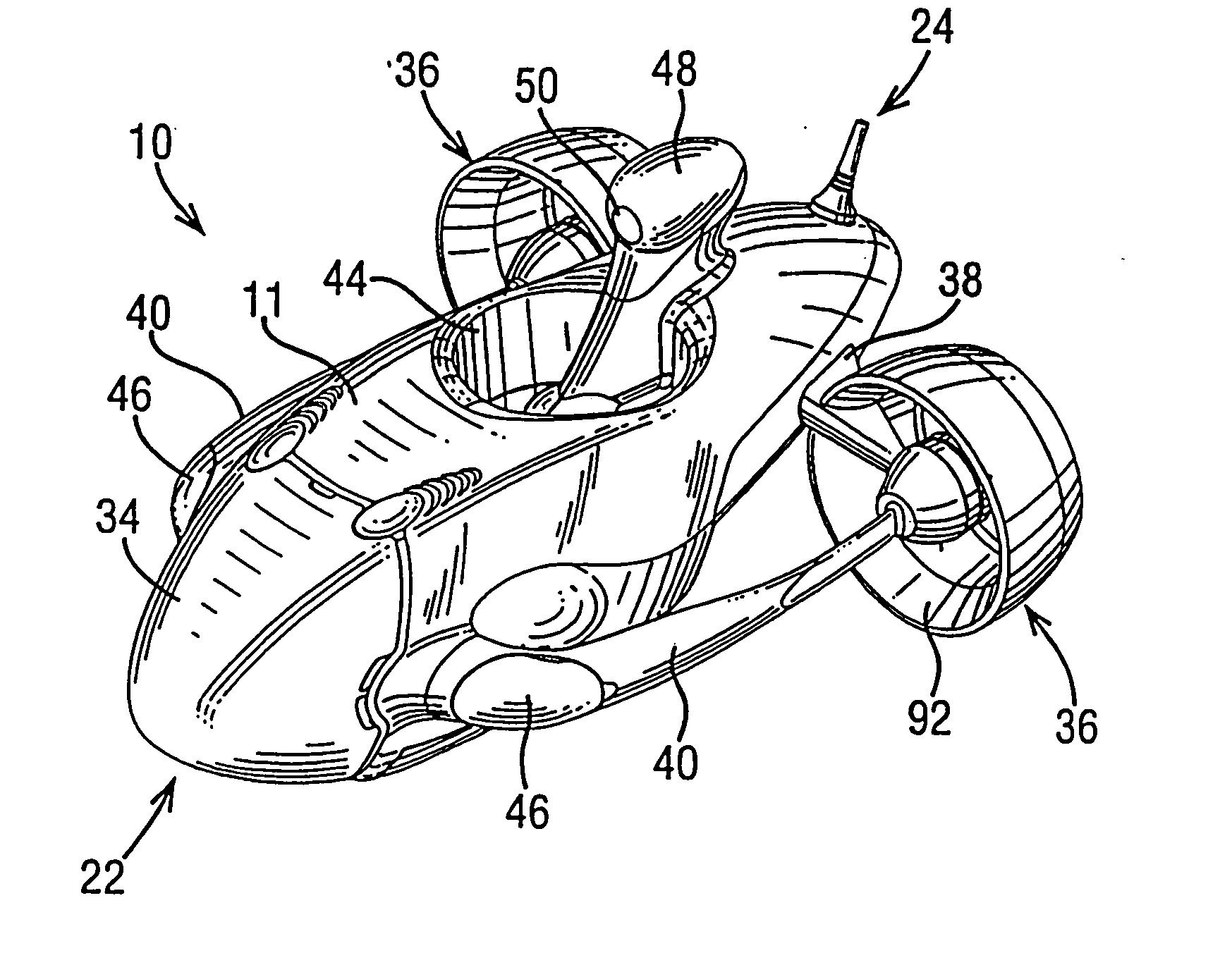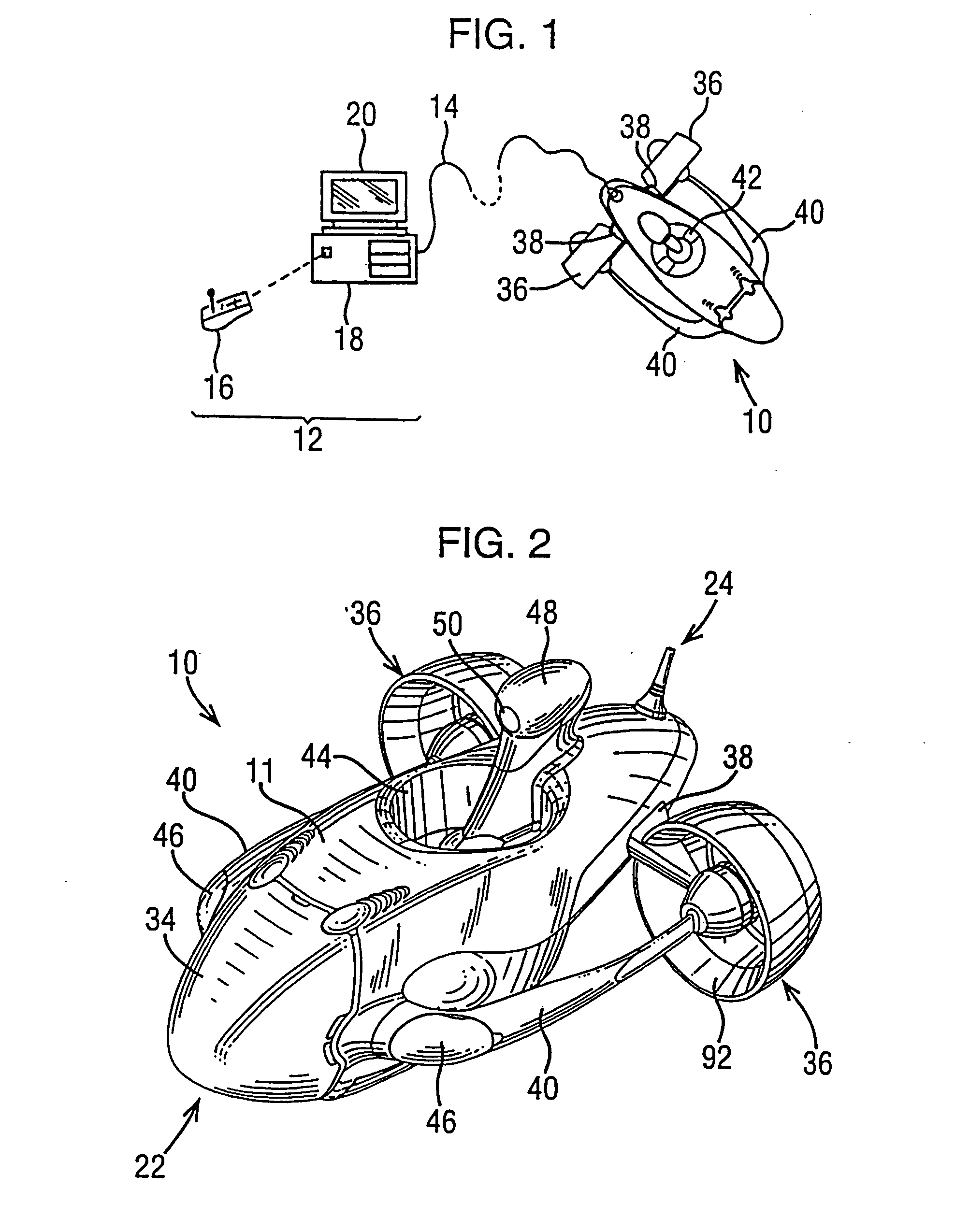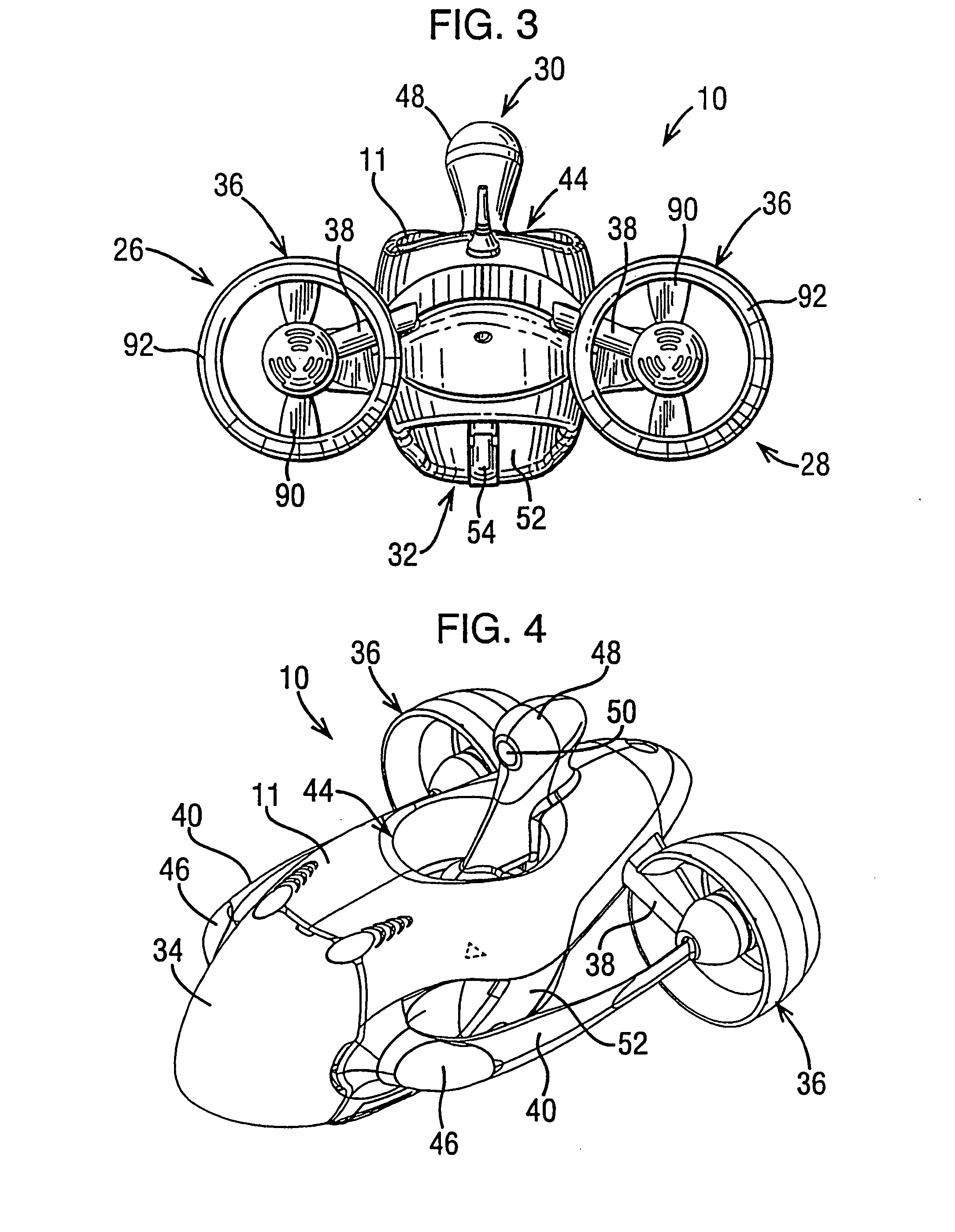Remote operated vehicles
a remote-operated, vehicle technology, applied in the direction of special-purpose vessels, coupling device connections, vessel construction, etc., can solve the problems of difficult manhandling of the power supply and umbilical cable for transmitting power from the surface to the fish, and the general mass of commercial rovs
- Summary
- Abstract
- Description
- Claims
- Application Information
AI Technical Summary
Benefits of technology
Problems solved by technology
Method used
Image
Examples
Embodiment Construction
The ROV
[0069] Referring to FIGS. 1 to 4 there is shown an ROV kit in accordance with the present invention. The ROV is a collection of units which together perform the function of an underwater remotely controlled television camera. The ROV kit comprises two main units, these being the underwater unit or “fish”10, and the surface control unit or “topside”12. Joining the two main units is a cable or “umbilical cable”14. The cable 14 is preferably at least 200 m long and accordingly is, for ease of handling, generally wound onto a winder, not shown.
The Topside 12
[0070] The topside 12 comprises a wireless handset 16 and a computer unit 18. During the deployment operations of a fish 10, there are different activities such as launch, depth deployment and recovery of the fish 10 from the water. For these different operations, the operator may need to be in a different place or may need to move about the zone in which the operations take place. The wireless handset makes this easy and ...
PUM
| Property | Measurement | Unit |
|---|---|---|
| diameter | aaaaa | aaaaa |
| depth | aaaaa | aaaaa |
| mass | aaaaa | aaaaa |
Abstract
Description
Claims
Application Information
 Login to View More
Login to View More - R&D
- Intellectual Property
- Life Sciences
- Materials
- Tech Scout
- Unparalleled Data Quality
- Higher Quality Content
- 60% Fewer Hallucinations
Browse by: Latest US Patents, China's latest patents, Technical Efficacy Thesaurus, Application Domain, Technology Topic, Popular Technical Reports.
© 2025 PatSnap. All rights reserved.Legal|Privacy policy|Modern Slavery Act Transparency Statement|Sitemap|About US| Contact US: help@patsnap.com



